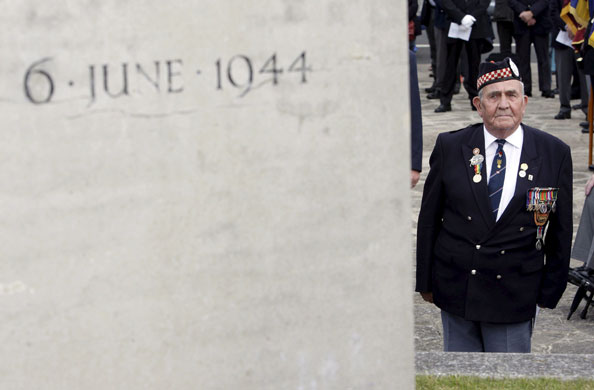kejames: Perhaps I should just tweet the sequences to Genbank: ctagctgctgttgaagttccatctataaatggataagactttggtcttagtatatacgagttcttThat's right, TwistedBacteria actually thought to take my DNA fragment - tweeted in a moment of pure, hands-thrown-in-air frustration - and see if he could identify what species the fragment came from. What he did is essentially DNA barcoding (but using Genbank instead of the voucher-specimen-linked BARCODE-tagged databases 'approved' by CBOL).
gaaagtaaaggaacaata
TwistedBacteria: chloroplast Prunus laurocerasus (cherry laurel) RT @kejames: Perhaps I should just tweet the sequences to Genbank: ctagctgctgttgaagttccatcta
The really cool thing is that even though I tweeted such a short sequence (just 83bp), and even though I had copied that sequence from a randomly chosen place in my data set, TwistedBacteria's correctly identified the genus if not the species of my specimen; the fragment I tweeted is from blackthorn (Prunus spinosa), not cherry laurel (Prunus laurocerasus).
It was entirely by accident that I happened to choose a blackthorn sequence to tweet, but because I did, I was reminded of a little haiku I did for the Science Creative Quarterly a while back:
And that's when the idea hit me: why not take this 'recipe' one step further and make a fun and educational puzzle out of it by leaving the title of the recipe blank and encrypting the ingredients as DNA sequences? And why not do this for a bunch of recipes and make a whole DNA-encrypted recipe book? Here's what my sloe gin recipe might look DNA-encrypted:
The following ingredients make up what alcoholic beverage?
gcacaggctgaaacaggtgaaatcaaagggcattacttgaacgctactgcaggtacatgcgaagagatgatgaa
aagagctgcatttgccagagaattgggggttcctatcgtaatgcatgattacttaacagggggattcactgcaaata
ctaccttggctcattattgccgagataatggtttacttcttcacatccaccgtgcaatgcatgcagttattgatagaca
gaagaatcatggtatgcactttcgtgtactagctaaagcgttacgtatgtctggtggagatcatatacacgctggtac
ggatgtactatcaaaccaaaattgggtctatctgccaagaattatggtagagcggtttatgaatgtctccgtggtgga
cttgattttaccaaggatgatgaaaacgtgaattcccaaccatttatgcgctggagagatcgtttctgcttttgtgcag
aagcactttataaagctcaggctgagacgggtgagattaagggacattacctgaatgcgactgcagggacatgtga
agaaatgatgaaaagagcagtattcgccagagaattgggagttcctatagtcatgcatgactatctgactggaggtt
aagaaatgattaagagagctgtatttgcaagagaattaggggttcctattgtaatgcatgactacttaactggggga
ttcaccgcaaatactactttggctcattattgccgcgacaatggcctacttcttcacattcaccgtgcaatgcatgcagt
tattgatagacagaaaaatcatggtatgcatttccgtgtattagctaaagcattgcgtatgtctgggggagatcatatc
cactccggtacagtagtaggtaagttagaaggggaacgcgaaatgactttaggttttgttgatttattgcgcgatgatt
gcacaggctgaaacaggtgaaatcaaagggcattacttgaacgctactgcaggtacatgcgaagagatgatgaa
aagagctgcatttgccagagaattgggggttcctatcgtaatgcatgattacttaacagggggattcactgcaaata
ctaccttggctcattattgccgagataatggtttacttcttcacatccaccgtgcaatgcatgcagttattgatagaca
gaagaatcatggtatgcactttcgtgtactagctaaagcgttacgtatgtctggtggagatcatatacacgctggtac
ggatgtactatcaaaccaaaattgggtctatctgccaagaattatggtagagcggtttatgaatgtctccgtggtgga
cttgattttaccaaggatgatgaaaacgtgaattcccaaccatttatgcgctggagagatcgtttctgcttttgtgcag
aagcactttataaagctcaggctgagacgggtgagattaagggacattacctgaatgcgactgcagggacatgtga
agaaatgatgaaaagagcagtattcgccagagaattgggagttcctatagtcatgcatgactatctgactggaggtt
aagaaatgattaagagagctgtatttgcaagagaattaggggttcctattgtaatgcatgactacttaactggggga
ttcaccgcaaatactactttggctcattattgccgcgacaatggcctacttcttcacattcaccgtgcaatgcatgcagt
tattgatagacagaaaaatcatggtatgcatttccgtgtattagctaaagcattgcgtatgtctgggggagatcatatc
cactccggtacagtagtaggtaagttagaaggggaacgcgaaatgactttaggttttgttgatttattgcgcgatgatt
One could mix it up a bit and use some amino acid sequences too, and for ingredients that are pure products of biochemical pathways (sugar, alcohol, etc.), one could use sequences of genes that function in those pathways.
Lessons would include:
- our food is (or was, or was produced by) living organisms with DNA in them (this is an important lesson - I've heard that children are generally unaware that what they ate for breakfast consisted of plants and animals)
- you can identify species by their DNA
- genes encode proteins, which have functions in the cells of plants and animals
- practice using Genbank and BOLD databases



























